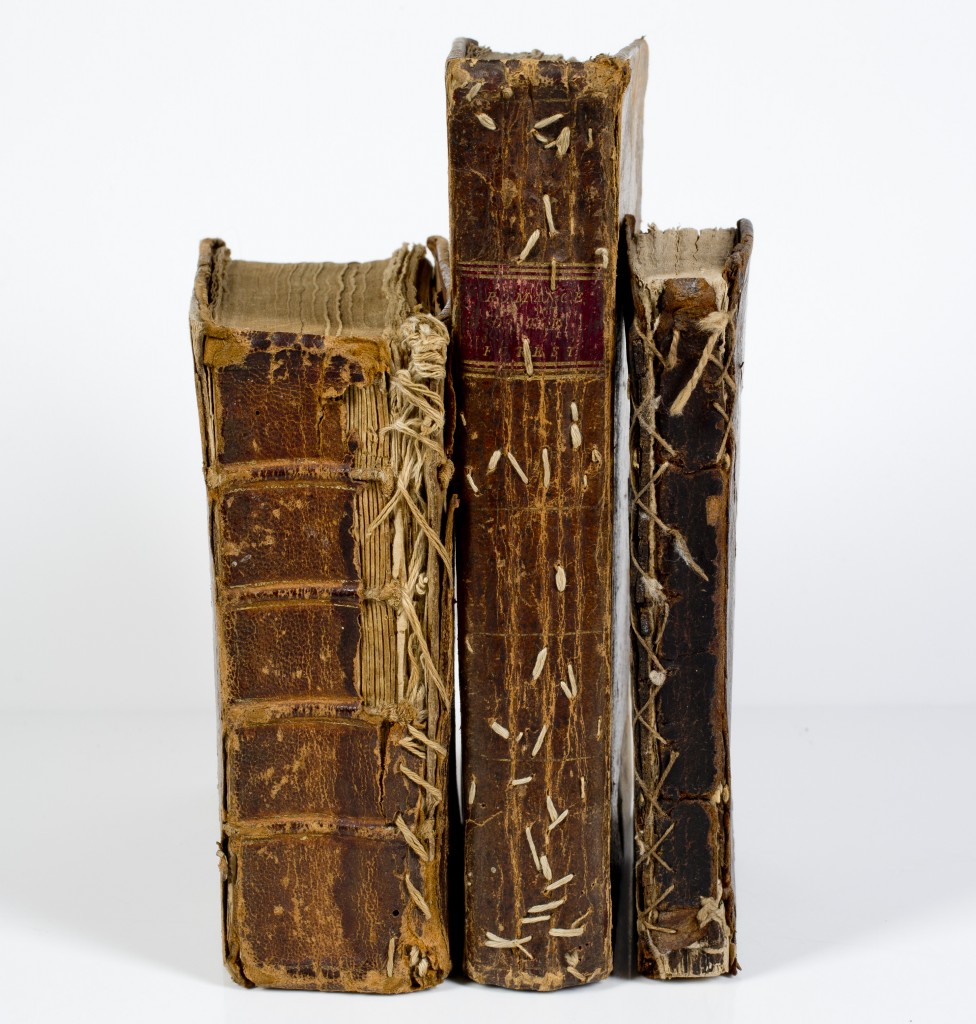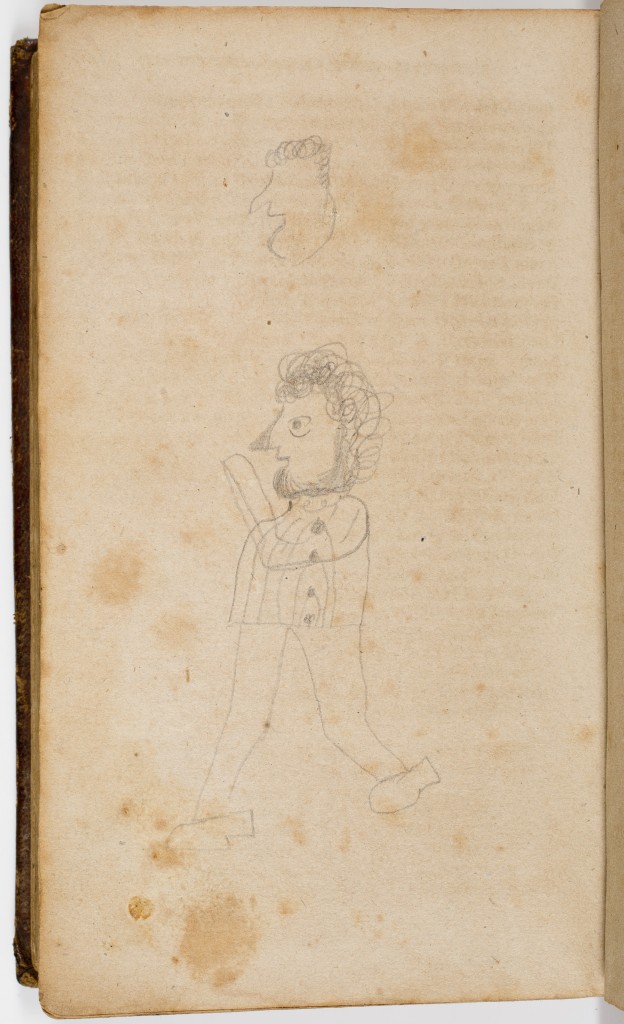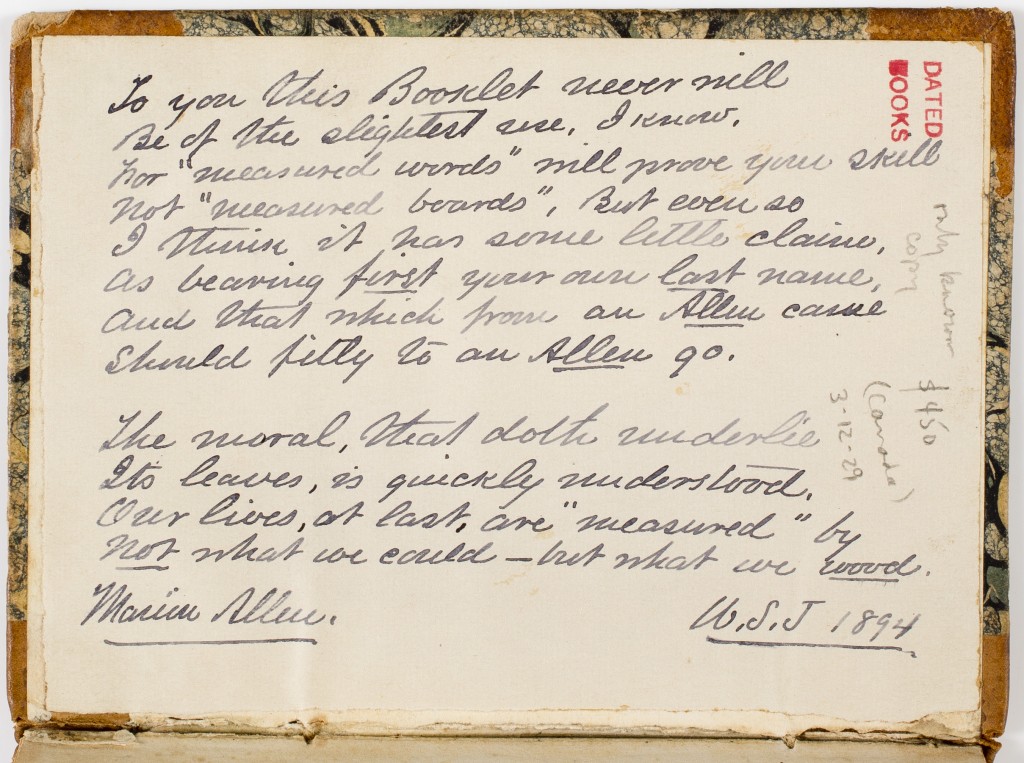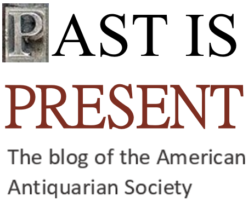
As a cataloger for the North American Imprints Program, my job is to catalogue books and pamphlets printed and published in North America between 1801 and 1820. I describe them, I put them into context with other books and pamphlets, and I become the latest person to handle an item that is two centuries old.
Many people have touched these books over their 200 year lifespan, and some of them leave traces of their presence and lives when books pass through their hands. I’ve seen the results of individuals wielding needles and thread (left), classical studies of the human form (below right), and poetic claims of ownership (bottom). Sometimes the inscriptions and annotations left in a book catch my eye and pique my interest, although I will never know what a person was thinking when she or he put pen to paper and inscribed their book!
Of the many inscriptions that I have seen, the following made me smile, intrigued me, or otherwise stood out, and I thought that I would share them.

1. A novel and a sweet
The Pastor’s Fire-side by Jane Porter (New York, 1817) bears the inscription “Emmeline M. Henrys book presented by her mother as a birth-day present together with a lump of sugar.”
I can’t help but hope that Emmeline M. Henry enjoyed her birthday gifts, perhaps with a nice cup of tea.
2. Hobbit-style gift-giving
Miss Olive L. Gregory received A Real Treasure for a Pious Mind (New York, 1807) as a “present from her brother Harvey H. Gregory on the 25th of November 1818 being his birth day 24th year of his age.”
Olive Gregory was not the only young woman to own A Real Treasure for a Pious Mind, nor was she the only one to receive it as a gift. The American Antiquarian Society holds eleven copies of it printed between 1797 and 1820, and seven of them are inscribed. Six of the seven inscribed copies were owned by women (the seventh inscription is ambiguous). Julia Bissell received a copy of the 1801 U.S. edition “from [her] grandmother, who died Sept. 24, 1824, age 92 years,” and Lucretia Burrows was given a copy of the 1803 New Haven edition as “a present from her grand-father.”
However, Miss Gregory is the only person to have received it as a gift on someone else’s birthday!

3. Honesty is the best policy
Dr. James Tinsley sent a copy of his A New Theory of Yellow Fever, Founded on the Results of Chemical Experiments (Charleston, 1819) to Dr. Samuel L. Mitchill, a prominent New York physician. On page 25 someone, possibly Tinsley, states that “the pages prior to the 25th I conceive to be of no consequence whatever.” One wonders about Mitchill’s reaction to the remaining pages of the pamphlet, which argues that yellow fever is caused by a combination of heat, moisture in the air, fauna and flora putrefying, and the effects of plants and animal respiration on air quality.
4. Presented without comment
Pavel Svin’in’s Some Details Concerning General Moreau (Amherst, N.H., 1814) bears the inscription: “Raccoon, this is my book, Mr. Flanagain.”
